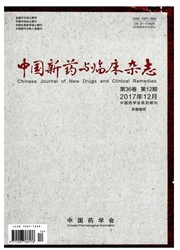

 中文摘要:
中文摘要:
目的:足细胞哺乳动物雷帕霉素靶蛋白复合体1(m TORC1)活化是糖尿病肾病的重要发病机制。我们前期在db/db小鼠中观察到调控足细胞活动度的尿激酶型纤溶酶原激活物受体(u PAR)表达增加。本研究旨在研究晚期糖基化处理的牛血清白蛋白(AGE-BSA)对m TORC1、u PAR和足细胞活动度的影响并初步探索其可能的分子联系。方法:体外培养小鼠肾小球足细胞,MTT法和免疫荧光分析各刺激物及干预剂对足细胞存活率及细胞骨架的影响。Western blotting检测正常对照组、对照BSA组及AGE-BSA处理组m TORC1的活性及u PAR的表达水平,划痕实验检测足细胞的活动度。进一步采用雷帕霉素抑制AGE-BSA组m TORC1的活性,观察u PAR和细胞活动性的改变。结果:在预设浓度及干预时间下各刺激物及干预剂对细胞存活率及细胞骨架无明显影响。AGEBSA可上调足细胞m TORC1的活性和u PAR的水平,并促进足细胞移动。雷帕霉素能抑制AGE-BSA引起的u PAR表达水平的上调和细胞活动性的增强。结论:AGE-BSA可能通过m TORC1/u PAR途径导致足细胞移动性增强。
 英文摘要:
英文摘要:
AIM: To investigate the influence of advanced glycosylation end products-modified bovine serum albumin (AGE-BSA) on mammalian target of rapamycin complex 1 (mTORC1), urokinase-type plasminogen activator re- ceptor (uPAR), and cell mobility in the podocytes, and to further explore the probable relationship. METHODS: The conditionally immortalized mouse podocyte cell line was cultured in vitro. MTT assay and immunofluorescence were used to analyze the cell viability and cytoskeleton of the podocytes treated with the stimuli and intervention agents. The activity of mTORC1 and the expression level of uPAR in normal podocytes and podocytes treated with control BSA or AGE-BSA were detected by Western blotting. The migration ability of the podocytes was determined by would-healing assay. Rapamycin was added to inhibit the activity of mTORC1 along with the addition of AGE-BSA to observe the changes of uPAR and the motility of podocytes. RESULTS : No significant difference of the cell viability or cytoskeleton in the podocytes treated with the stimuli and intervention agents was observed. AGE-BSA up-regulated the activity of mTORC1 and the expression of uPAR, and induced the high mobility of the podocytes. Rapamycin obviously reduced the high expression level of uPAR and the increase in the migration ability of podocytes caused by AGE-BSA treatment. CONCLUSION: AGE-BSA might cause the high migration of podocytes through the mTORC1/uPAR signaling pathway.
 同期刊论文项目
同期刊论文项目
 同项目期刊论文
同项目期刊论文
 期刊信息
期刊信息
